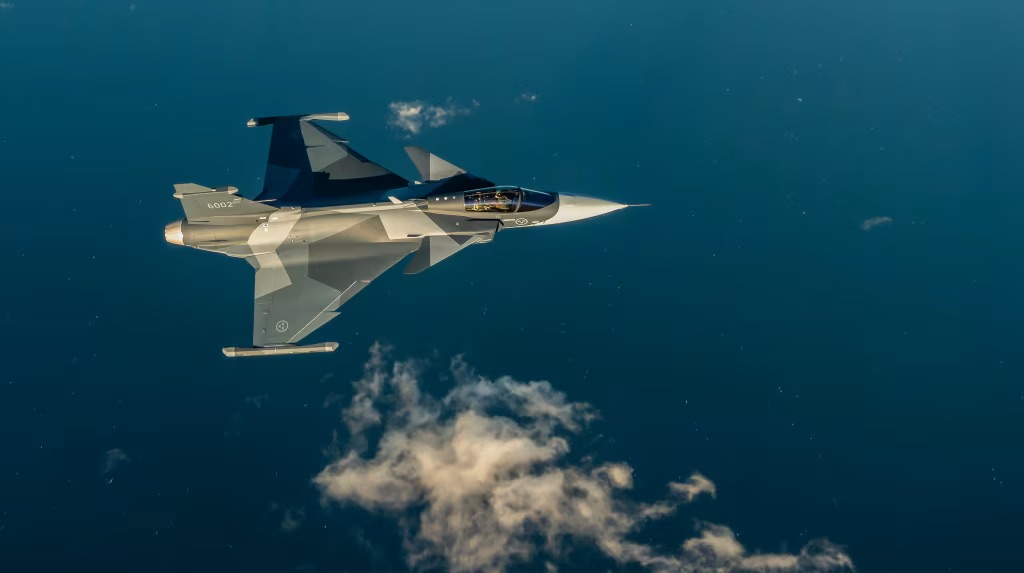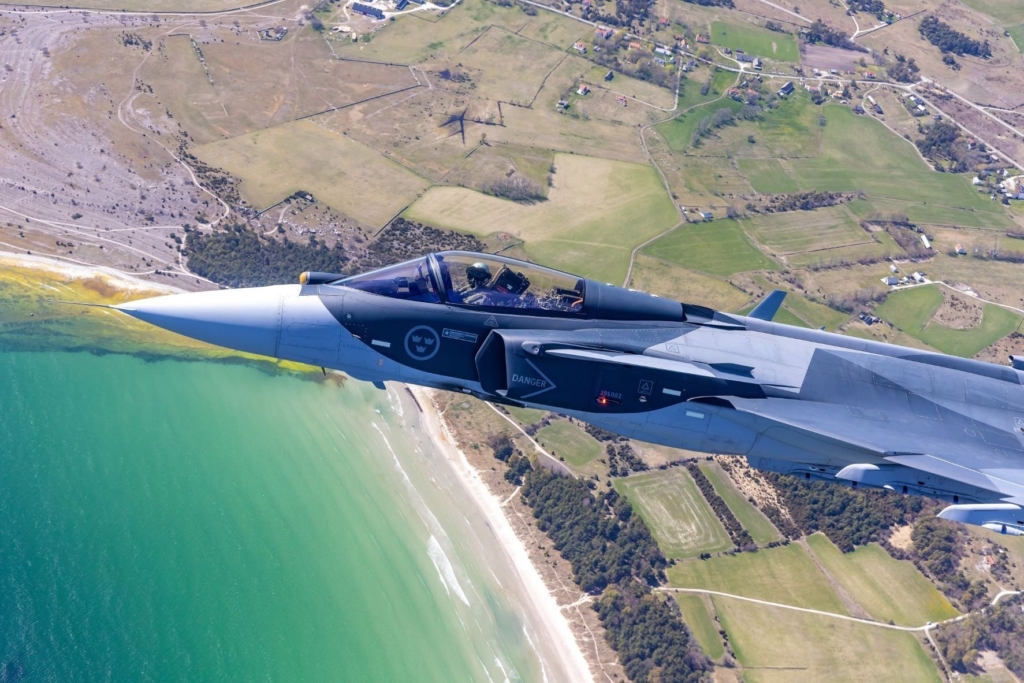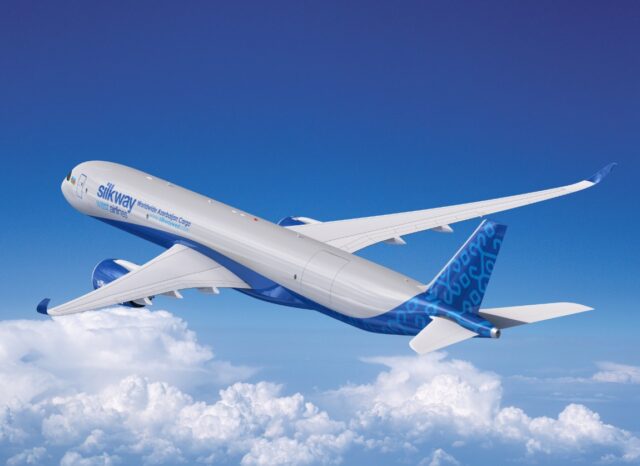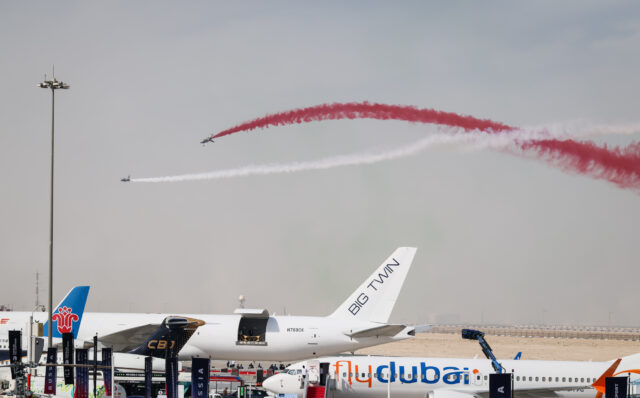Colombian right-wing candidate urges Trump to veto Saab Gripen sale until 2026 election

November 19, 2025

Right-wing Colombian presidential candidate seeks the US to veto the Saab Gripen sale until after the 2026 election. The move highlights the power of the US to veto allied fighter jet sales.
Colombian presidential candidate asks Trump to block sale of Gripens
Yesterday, right-wing Colombian presidential candidate Abelardo de la Espriella posted on X (formerly Twitter) asking Trump to block the sale of Gripens to Colombia.
.@POTUS @SecWar @SecRubio @USEmbassyBogota
— Abelardo De La Espriella (@ABDELAESPRIELLA) November 17, 2025
Solicito formalmente que los Estados Unidos impongan temporalmente un veto a la compra de 17 aeronaves SAAB, las cuales incluyen como componente fundamental los motores General Electric F414G de fabricación estadounidense —estándar en los Gripen JAS 39 E/F—, hasta que el nuevo gobierno que asumirá el 7 de agosto de 2026 revise los aspectos del acuerdo con el acompañamiento del Departamento de Guerra de los Estados Unidos.
Esto, con el fin de garantizar que el precio individual de cada aeronave y el offset de la negociación reflejen los intereses estratégicos vitales de Colombia y su papel como socio global clave de la OTAN y aliado de los Estados Unidos en las Américas.
Asimismo, este veto temporal evitará que las próximas elecciones legislativas y presidenciales sean ilegalmente influenciadas por dineros de corrupción relacionados con el mayor contrato que el gobierno criminal de Petro pretende suscribir, sin brindar una explicación suficiente sobre su conveniencia financiera o militar, cuando restan apenas nueve meses para que culmine su mandato.
(A.D.L.E.) 🇨🇴
Espriella wrote, “I formally request that the United States temporarily impose a veto on the purchase of 17 SAAB aircraft….until the new government that will take office on August 7, 2026.”
He said that would give the new Colombian government the chance to review the purchase with the US government.
In November 2025, Latin America Reports wrote that a poll showed Espriella as a leading contender in the upcoming 2026 Colombian presidential election. The three leading candidates were Iván Cepeda, with 24%, Sergio Fajardo, also with 24%, and Abelardo de la Espriella, with 17%.

Relations between the Trump Administration and the current left-wing Colombian President Gustavo Petro are dire. In October, The Guardian reported the US sanctioned him, accusing him of ‘allowing drug cartels to flourish.’ This followed the US State Department revoking Petro’s visa in September after he took part in pro-Palestinian protests in New York.
Geopolitics are at the heart of fighter jet sales
The development, manufacturing, and acquisition of fighter jets are often as much about geopolitics as anything else. They are incredibly complicated machines that tie countries together for decades.

After Trump returned to the office and started threatening Canada, many in Canada have advocated dropping its order for 88 Lockheed Martin F-35 Lightning II stealth fighters in favour of the Swedish JAS 35 Gripen E/F fighter jet.
However, this is not nearly as simple as it seems, and this is now on display in Colombia. Last week, Colombia ordered 17 Saab Gripen fighter jets from Sweden to replace its ageing fleet of Israeli-supplied Kfir jets.
The Swedish Government hailed the sale, “The sale of JAS Gripen to Colombia is one of Sweden’s largest ever export deals.”

The Gripen is becoming the top fighter jet in South America. Brazil has signed a contract for 36 Gripens and is negotiating to purchase more. They are assembled locally by Embraer. Meanwhile, Peru is also planning to purchase 24 Gripens.
Get the latest aerospace defence news here on AGN.
Why the US can veto Gripen sales
Countries can veto the re-export of their components in foreign weapon systems. For decades, the UK upheld a de facto veto on selling fighter jets to Argentina. French naval Super Étendard fighter jets sold to Argentina soon became non-operational because the UK refused to sell needed components.
The @MindefArg of Argentina (🇦🇷) has officially decided that they will no longer attempt to recover the Super Étendard Modernisé.
— SA Defensa (@SA_Defensa) May 18, 2023
The 5x aircraft were delivered from France (🇫🇷) in 2019, however never took flight due to lack of ejectors because of the British (🇬🇧) embargo. pic.twitter.com/3Lh9eW5j3u
With Argentina, the UK finally relented by allowing Denmark to sell a couple of dozen old F-16s in 2024.
While the Gripen is Swedish-made, it has components from many countries, meaning that several countries have de facto vetoes over its export. For example, the fly-by-wire systems are supplied by the UK’s BAE Systems, while France’s Safran is also a major supplier.

Notably, the US supplies the General Electric F414 turbofan that powers the Gripen E. But while the engine is the most notable US component, the US supplies many more vital Gripen systems.
Airframer shows the US’s Collins Aerospace, Honeywell, L3Harris, and other US defence contractors are all important suppliers of avionics and other systems. The scale of the Gripen’s US dependency is not shared by its European Eurofighter and Rafale counterparts.
We achieved a major production milestone for our partner @Saab with the first MELP5 launcher for the Gripen E.
— L3Harris Technologies (@L3HarrisTech) July 11, 2023
The pneumatic eject launcher enables the Gripen E to carry and safely launch advanced missiles – without pyrotechnics.
Learn more: https://t.co/HR8zl3e8bY pic.twitter.com/0QlE7Zq8f7
The US has a veto on the sale of almost every commercial aircraft. After it slapped sanctions back on Iran in 2017, Airbus and ATR were unable to sell their jets to Iran, even though Europe was not taking part in the sanctions. China’s COMAC and Brazil’s Embraer are also unable to sell their commercial jets to sanctioned Russia now for the same reason.
Separately, since the passage of the CAASTA Act of 2017, the US has de facto vetoed Russian fighter jet exports to almost any country that is not already sanctioned by the US (like Iran). This has led to Russian fighter jet sales collapsing.
















